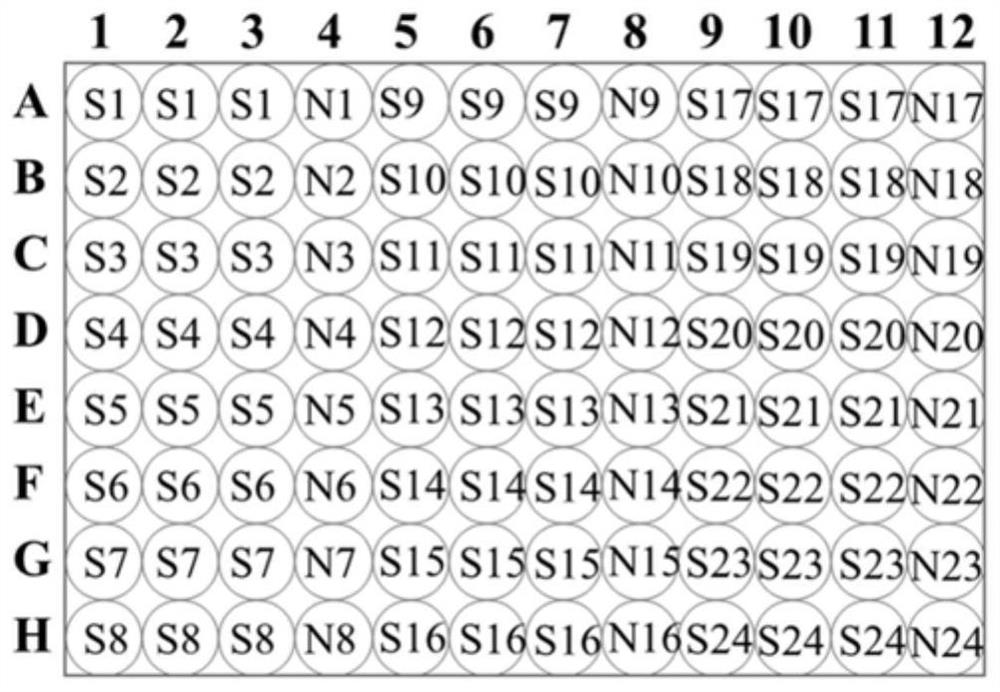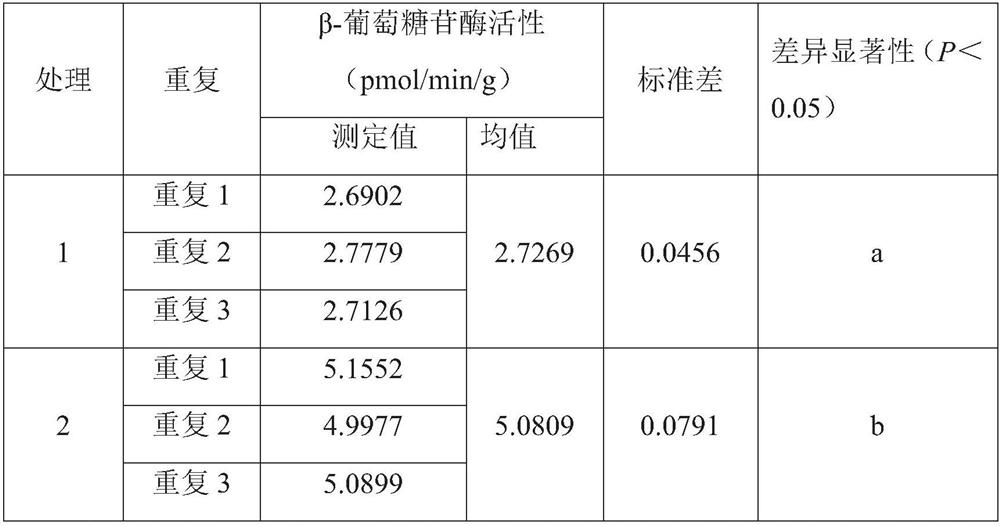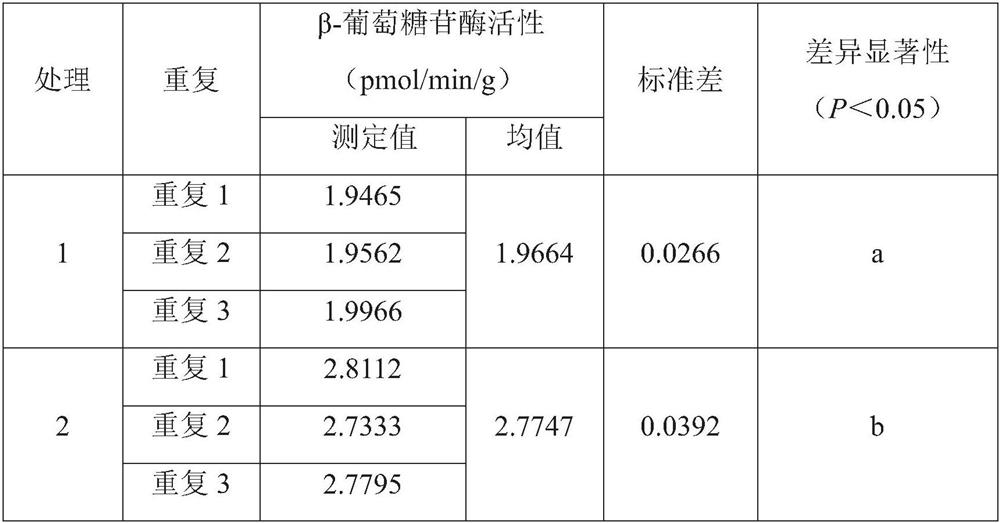Method for detecting activity of beta-glucosidase in litters
A technology of glucosidase and litter, applied in the field of biochemistry, can solve the problems of more enzyme solution, less β-glucosidase, easy to be interfered, etc., and achieve the effect of optimizing the reaction system, reducing interfering substances and shortening the operation time.
- Summary
- Abstract
- Description
- Claims
- Application Information
AI Technical Summary
Problems solved by technology
Method used
Image
Examples
Embodiment 1
[0040] Embodiment 1: establish the method for detecting litter β-glucosidase activity
[0041] 1. Reagent preparation
[0042] 1M sodium hydroxide solution: 9.999g sodium hydroxide, dilute to 250mL with deionized water to prepare, store at room temperature.
[0043] Universal buffer stock solution: 3.025g Tris, 3.9g maleic acid, 3.5g citric acid (or 3.825g citric acid monohydrate), 1.56g boric acid, and 122mL sodium hydroxide (1M), dilute with deionized water to 250 mL was prepared.
[0044] Culture buffer: adjust 100mL universal buffer stock solution to the required pH value (pH 4.5) with hydrochloric acid, dilute to 1000mL with deionized water, and sterilize at 4°C for later use.
[0045] Stop buffer (Tris 1M; pH 10-11): 129 grams of Tris was added to 750 mL of deionized water, the deionized water was adjusted to 1000 mL, and stored at room temperature after autoclaving.
[0046] MUB fluorescent standard substance series solution: Weigh 8.8mg MUB and dissolve it into 1mL ...
Embodiment 2
[0059] Example 2: Detection of β-glucosidase activity in the litter of sweetgum pure forest and sweetgum black pine mixed forest
[0060] The litter used in this example was collected from the pure forest of sweetgum sweetgum and mixed forest of sweetgum black pine at the southwestern foot of Zijin Mountain (32°04′N, 118°50′E) in Nanjing City, Jiangsu Province. The collected liquidambar fallen leaves were killed at 105°C for 15 minutes, dried continuously at 80°C for 48 hours, and 20 g of dry weight was weighed and put into a 300-mesh (0.05mm pore size) 15cm*10cm nylon mesh bag. Nylon mesh bags containing dried sweetgum leaves were respectively buried in the pure sweetgum forest and the mixed sweetgum black pine forest, and covered with the original surface soil (0-10cm) about 1m away from the main trunk of the tree. After one year of burial, the semi-degraded litter was taken out, and impurities such as soil and sand were removed. Treatment 1 was the litter of the pure sweetg...
Embodiment 3
[0064] Embodiment 3: Detection of β-glucosidase activity of red eucalyptus plantation litter
[0065] The litter used in this example was collected from the 4-year-old and 9-year-old red eucalyptus plantations in the southern seedling base of Zhanjiang City, Guangdong Province (21°27'N, 110.11'E). The collected fallen leaves of red eucalyptus were killed at 105°C for 15 minutes, dried continuously at 80°C for 48 hours, and 15g of dry weight was weighed and put into a 300 mesh (0.05mm pore size) 15cm*10cm nylon mesh bag. Nylon mesh bags containing dried red eucalyptus leaves were respectively buried in 4-year-old and 9-year-old red eucalyptus plantations, and covered with the original surface soil (0-10cm) about 1m away from the tree trunk. After 4 months of burial, the semi-degraded litter was taken out, and impurities such as soil and sand were removed. Treatment 1 was the 4-year-old red eucalyptus plantation litter, and treatment 2 was the 9-year-old red eucalyptus plantatio...
PUM
 Login to View More
Login to View More Abstract
Description
Claims
Application Information
 Login to View More
Login to View More - R&D
- Intellectual Property
- Life Sciences
- Materials
- Tech Scout
- Unparalleled Data Quality
- Higher Quality Content
- 60% Fewer Hallucinations
Browse by: Latest US Patents, China's latest patents, Technical Efficacy Thesaurus, Application Domain, Technology Topic, Popular Technical Reports.
© 2025 PatSnap. All rights reserved.Legal|Privacy policy|Modern Slavery Act Transparency Statement|Sitemap|About US| Contact US: help@patsnap.com



